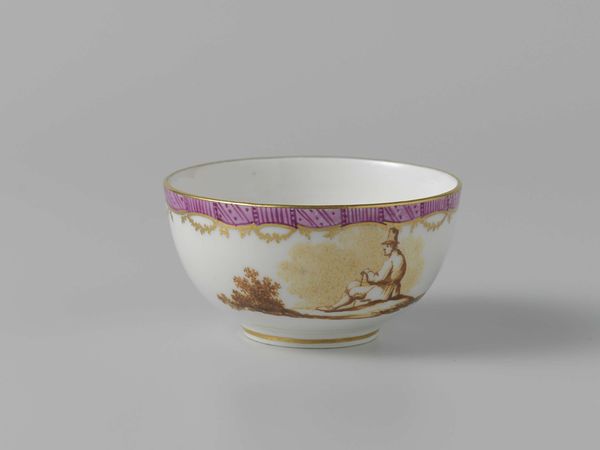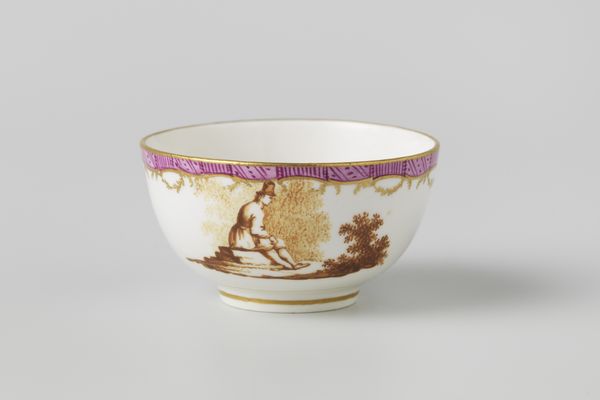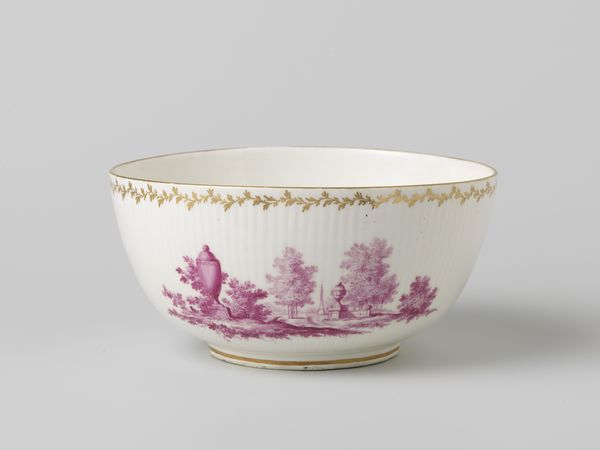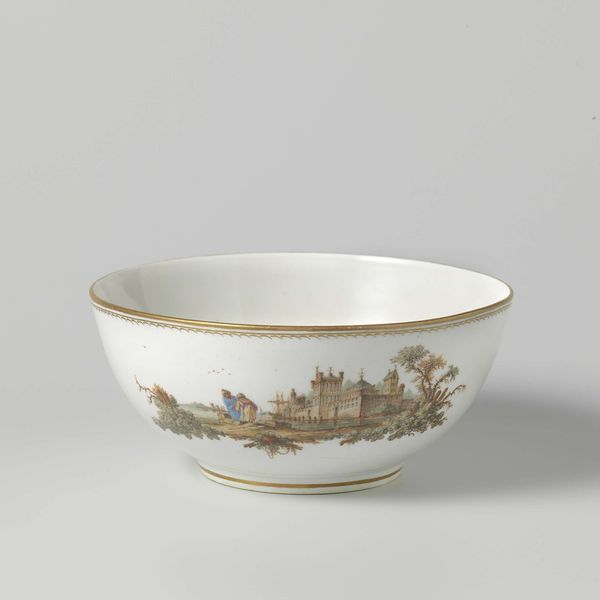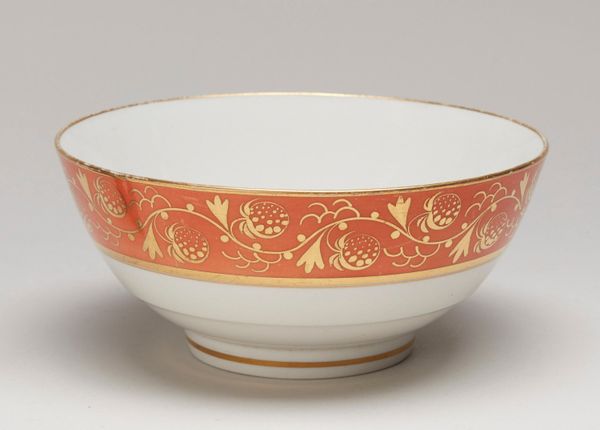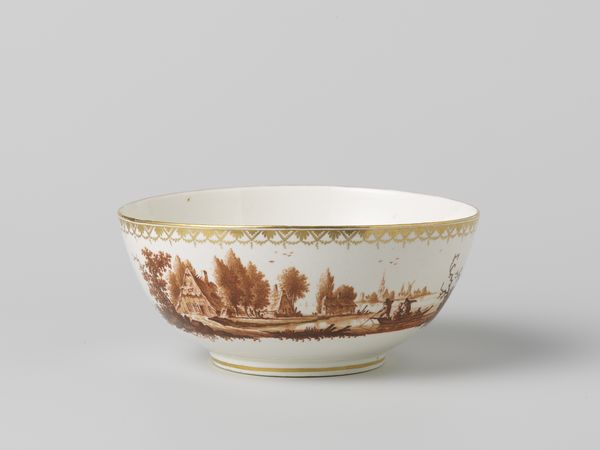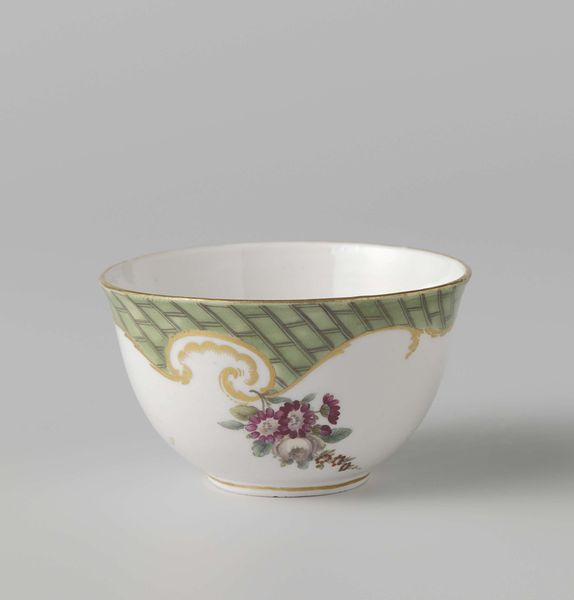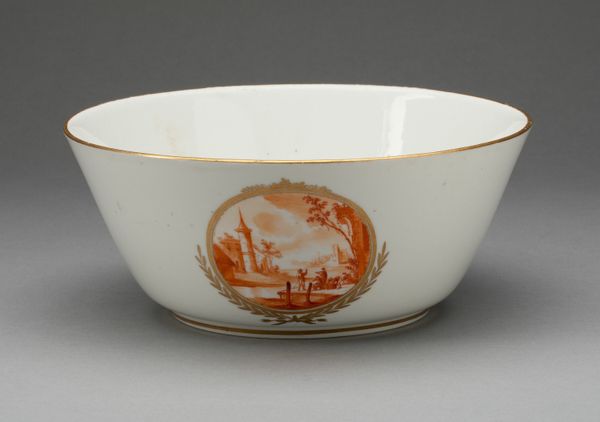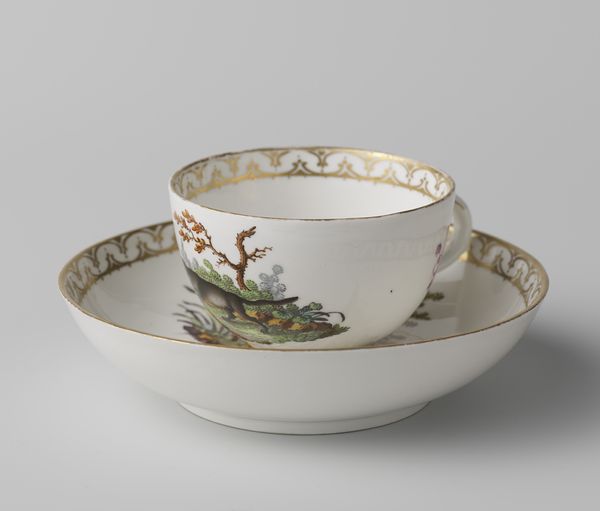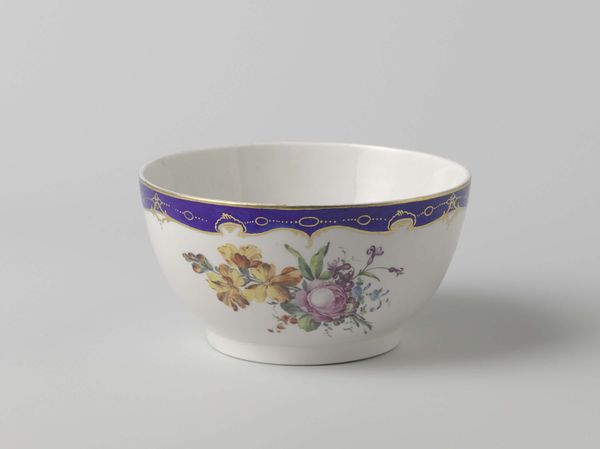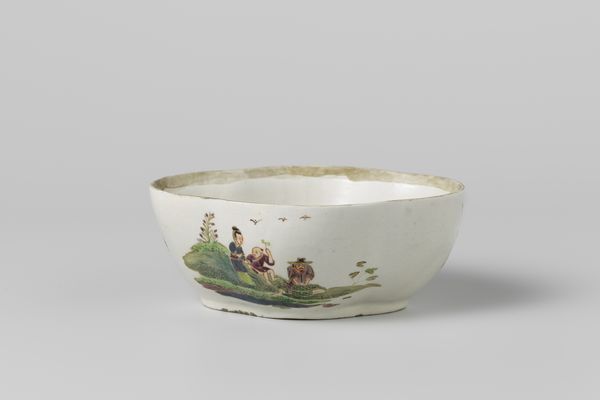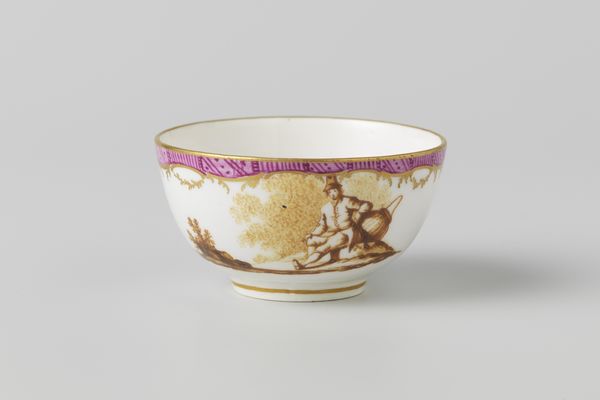
Dimensions: height 8.1 cm, diameter 18.1 cm, diameter 19.1 cm
Copyright: Rijks Museum: Open Domain
Editor: So this exquisite ceramic tea service, created around 1774 to 1778 by Loosdrecht, strikes me as remarkably detailed, especially considering its delicate nature. What do you see in this piece that I might be missing? Curator: The appeal of this tea service goes beyond mere delicacy. Note how genre painting adorns its surface. Can you recognize what daily lives are being portrayed? And consider how such imagery affects its functionality and domestic rituals associated with tea-drinking? Editor: I see figures in what look like rural scenes. So it is bringing scenes of everyday life into a formal tea service setting. Curator: Precisely. But go deeper. Why choose rural scenes? What was the intended impact of pairing the refinement of tea with imagery of labour and land? Perhaps it served as a gentle reminder of a different lifestyle... Do you perceive in these idyllic scenes a longing or an admiration? Editor: I hadn’t considered it in that light, that this object invites a connection between social classes, maybe romanticizing simple rural life. The rural paintings decorating this refined object encourage reflection, as much about those depicted, as about the consumers drinking tea from the set. Curator: Yes! It highlights a shared cultural memory that transcended class boundaries at the time, though the perspective from which those memories are made might differ quite substantially! Editor: That's a fascinating perspective, really altering my initial understanding of its function. It encourages thinking beyond utility. Curator: Indeed. Symbols on an object become imbued with meaning shaped by time, offering a rich tapestry of cultural understanding. Perhaps porcelain itself could be conceived of in that way?
Comments
rijksmuseum about 2 years ago
⋮
Tea services represented a significant part of the production of the Loosdrecht porcelain factory. On display here are a teapot, milk jug and sugar bowl along with other less familiar parts of a tea service, such as a slop bowl, which is used to rinse and warm the cups between two ‘courses’, and a drip catcher (pattipan), which catches the drips from the spout of the teapot.
Join the conversation
Join millions of artists and users on Artera today and experience the ultimate creative platform.
